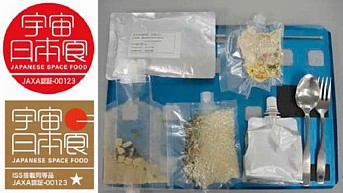 A new menu is in the works for hungry cosmonauts with a taste for Japanese cuisine. On June 27, in a move to expand the menu aboard the International Space Station, the Japan Aerospace Exploration Agency (JAXA) certified 29 Japanese food products from 12 manufacturers as official Japanese space food.
A new menu is in the works for hungry cosmonauts with a taste for Japanese cuisine. On June 27, in a move to expand the menu aboard the International Space Station, the Japan Aerospace Exploration Agency (JAXA) certified 29 Japanese food products from 12 manufacturers as official Japanese space food.
All items on the Japanese space menu -- which includes instant ramen, curry, onigiri (rice balls) and powdered green tea -- satisfy the International Space Station's stringent standards requiring packaged foods to withstand changes in air pressure and temperature and survive one year in storage under ordinary earthly temperatures. To meet these requirements, the food products are packed in special tubes. The foods also satisfy the preparation time requirement, which calls for food to be ready to eat in less than one hour after adding heat or water.
In addition, much of the space food has been redesigned to prevent it from scattering in zero-g. The ramen, for example, features a thick broth and noodles that are clumped together in bite-sized pieces. Extra flavoring has also been added because food tends to taste bland in zero-g.
Once the ISS menu is expanded to include the Japanese space food, astronauts aboard the space station will be able to eat it as they wish. Japanese astronaut Koichi Wakata, who is scheduled for a long-term stay aboard the International Space Station beginning in the fall of 2008, will undoubtedly appreciate the new fare.
Here is a complete list of the officially recognized Japanese space food products and the companies that produce them:
- Ajinomoto: Egg soup
- Onishi Foods: White rice, rice with red azuki beans, rice with red azuki beans and wild greens, salmon onigiri
- Kagome: Tomato ketchup, vegetable sauce, vegetable jelly drink (tomato/carrot)
- Kewpie: Mayonnaise, rice porridge
- Nissin: Soy sauce ramen, seafood ramen, curry ramen
- House Foods: Curry (beef/pork/chicken)
- Maruha: Mackerel in miso sauce, sardines in tomato sauce, kabayaki saury (broiled with sweet soy sauce)
- Mitsui Norin: Powdered green tea, powdered oolong tea
- Meiji: Functional drink (amino jelly)
- Yamazaki Baking: Azuki bean yokan (jelly), chestnut yokan
- Yamazaki-Nabisco: Kuroame (brown sugar candy), mint candy
- Riken Vitamin: Wakame (seaweed) soup, clear soup
[Sources: Yomiuri, JAXA press release]
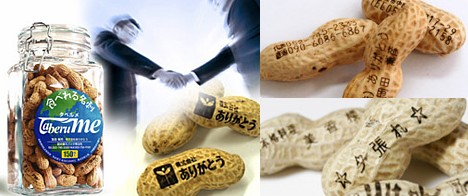
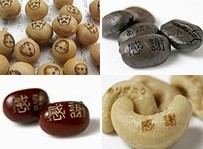 Taberu Me cards are created using Arigatou's high-grade CO2 laser engraver nicknamed "Shiawase-kun," which can etch up to 700 characters per second on hard organic materials like beans, nuts, rice and pasta and which has been optimized to print clean-looking logos, names and telephone numbers on the irregular surfaces of peanut shells.
Taberu Me cards are created using Arigatou's high-grade CO2 laser engraver nicknamed "Shiawase-kun," which can etch up to 700 characters per second on hard organic materials like beans, nuts, rice and pasta and which has been optimized to print clean-looking logos, names and telephone numbers on the irregular surfaces of peanut shells. 
 A new menu is in the works for hungry cosmonauts with a taste for Japanese cuisine. On June 27, in a move to expand the menu aboard the International Space Station, the Japan Aerospace Exploration Agency (JAXA) certified 29 Japanese food products from 12 manufacturers as official Japanese space food.
A new menu is in the works for hungry cosmonauts with a taste for Japanese cuisine. On June 27, in a move to expand the menu aboard the International Space Station, the Japan Aerospace Exploration Agency (JAXA) certified 29 Japanese food products from 12 manufacturers as official Japanese space food. 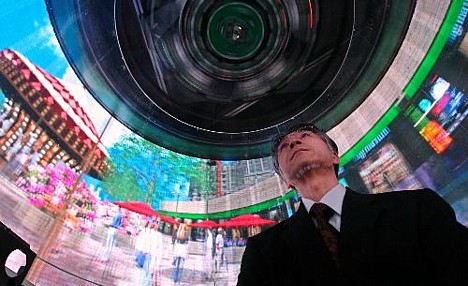
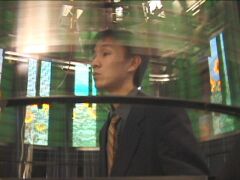 Inside the 1.2 meter (4 ft) tall, 2 meter (6.5 ft) wide cylindrical display are 50,000 LEDs arranged in columns. As the display rotates around the observer's head at a speed of 1.6 revolutions per second, these specially arranged LED columns show a slightly different image to each of the observer's eyes, thus creating the illusion of a 3D image. In other words, TWISTER tricks the eye by exploiting what is known as "binocular parallax" -- the apparent difference in position of an object as seen separately by the left eye and the right eye.
Inside the 1.2 meter (4 ft) tall, 2 meter (6.5 ft) wide cylindrical display are 50,000 LEDs arranged in columns. As the display rotates around the observer's head at a speed of 1.6 revolutions per second, these specially arranged LED columns show a slightly different image to each of the observer's eyes, thus creating the illusion of a 3D image. In other words, TWISTER tricks the eye by exploiting what is known as "binocular parallax" -- the apparent difference in position of an object as seen separately by the left eye and the right eye. 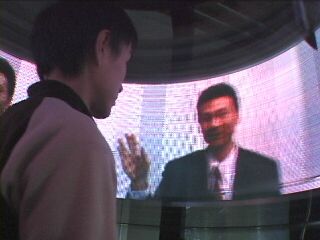 For now, TWISTER is capable of serving up pre-recorded 3D video from a computer, allowing viewers to experience things like virtual amusement park rides or close-up views of molecular models. However, the researchers are working to
For now, TWISTER is capable of serving up pre-recorded 3D video from a computer, allowing viewers to experience things like virtual amusement park rides or close-up views of molecular models. However, the researchers are working to 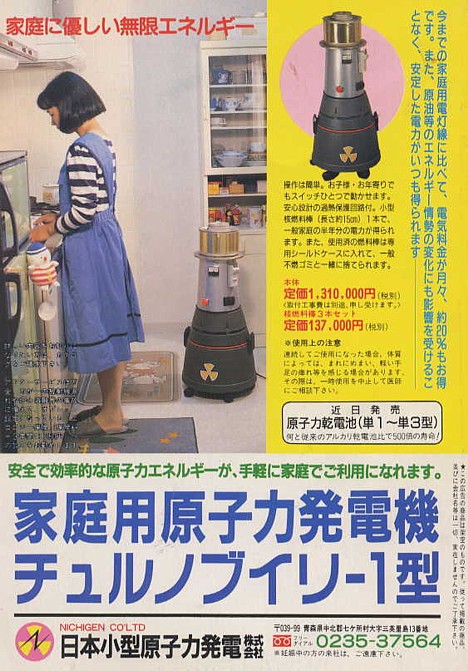
 On June 20, NTT Docomo and am/pm Japan announced plans to begin equipping convenience stores with cellphone recycling bins, making it easier for people to recycle their unwanted devices.
On June 20, NTT Docomo and am/pm Japan announced plans to begin equipping convenience stores with cellphone recycling bins, making it easier for people to recycle their unwanted devices. 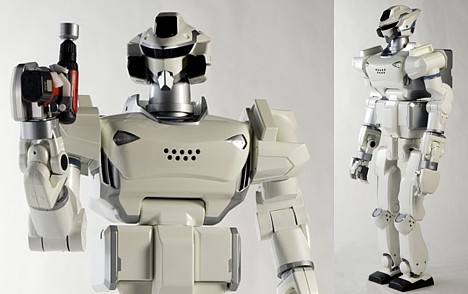
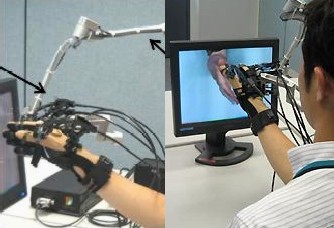 Researchers at NTT Comware have just made virtual reality a little more real. On June 20, the company unveiled a 3D display system that reproduces the physical feel of three-dimensional video by means of an actuator glove worn on the hand, allowing viewers to literally reach out and touch the person or object on the screen.
Researchers at NTT Comware have just made virtual reality a little more real. On June 20, the company unveiled a 3D display system that reproduces the physical feel of three-dimensional video by means of an actuator glove worn on the hand, allowing viewers to literally reach out and touch the person or object on the screen. 